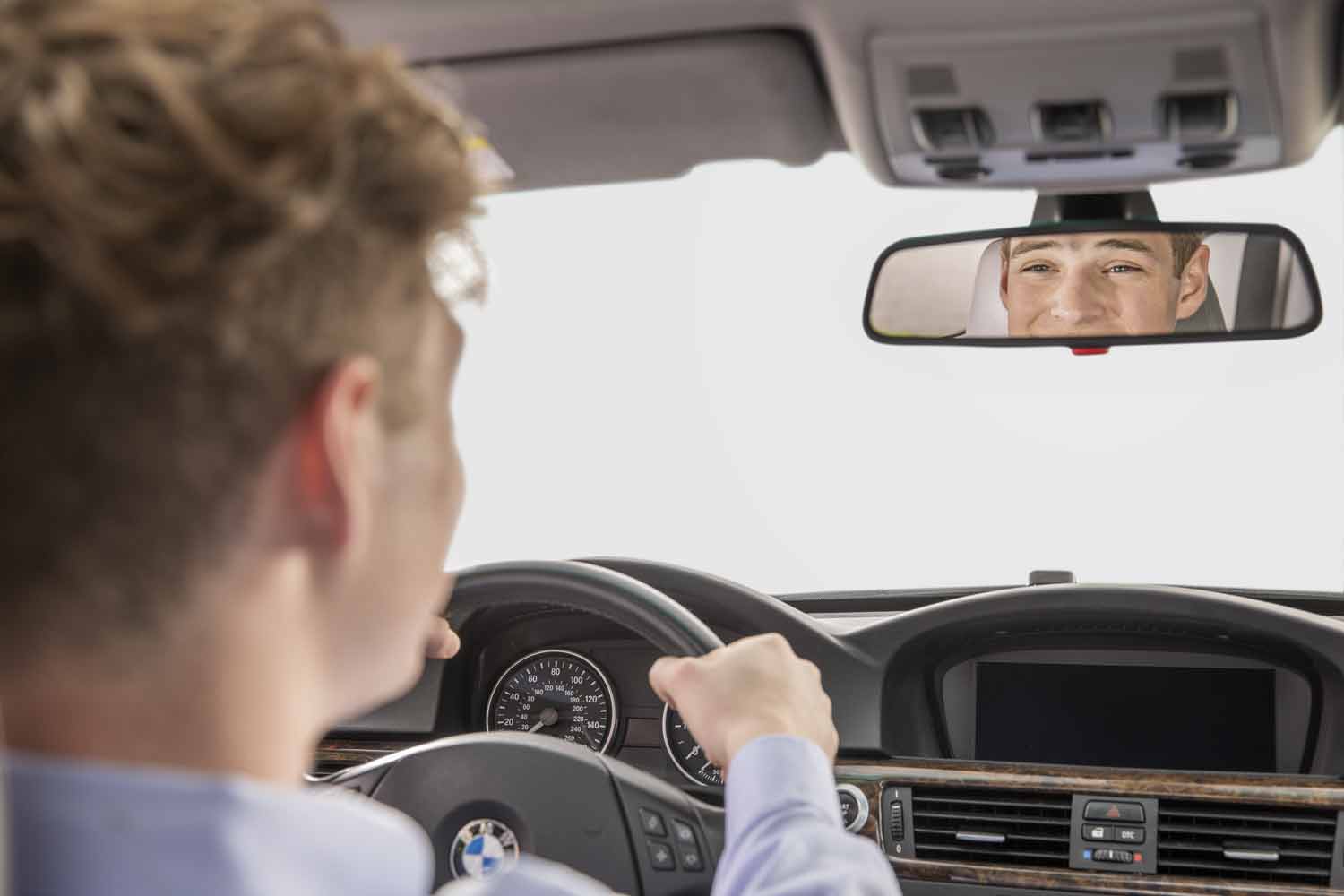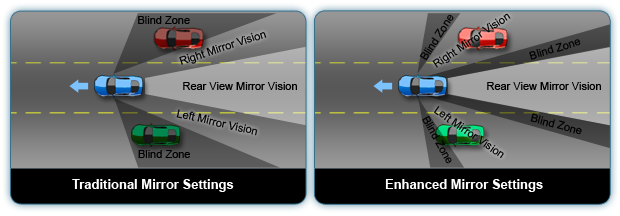How Often Should You Check Your Mirrors?
We're taught as new drivers to always keep our eyes on the road, which is true. However, driving always involves multi-tasking or doing more than one thing at a time. For example, as you’re driving down the highway, you need to continually assess how far the car ahead of you is and whether you’re keeping a safe following distance. At the same time, you need to read road signs for directions and the posted speed limit. You'll also need to check your mirrors and make sure you maintain proper space cushions around your vehicle.
 Checking the Mirrors
Checking the Mirrors
That's a lot to pay attention to at the same time! It's not quite as simple as keeping your eyes on the road ahead of you at all times. So, how often should you check your mirrors while still keeping your attention on the road ahead?
The trick is to always keep your eyes moving and to always check your path of travel in between checking your mirrors and other driving tasks. For example, you might take a look in your rearview mirror, then look back at your path of travel, then check your right side mirror, then look back at your path of travel.
Never look away from your path of travel for more than ½ a second because a collision could happen even in that short span of time.
How to Set Your Mirrors
Now that you know when to check your mirrors, let's take a look at how to position your mirrors.
There are two methods for setting your side mirrors. Traditionally, drivers set their side mirrors so they could still see the edge of their car in the mirrors. However, this setting creates large blind spots on either side of the car that are big enough to hide entire vehicles. This creates the need for drivers to turn their heads and glance over their shoulders to check their blind spots before changing lanes.
Another method for setting mirrors is BGE, or Blindzone Glare Elimination. In this method, drivers set their mirrors another 15 degrees out so that they can't see the edge of their own car at all in the side mirrors. This eliminates large blind spots and also gets rid of the headlight glare in your side mirrors.
Here's how to set your mirrors using the BGE mirror method:
- To adjust the mirror on your left side, place your head against the glass of your window and position the mirror so you can just barely see the edge of your own car in the mirror. This way, when you’re sitting straight up, you won’t be able to see the side of your car at all.
- To adjust the mirror on your right side, put your head in the center of the car and position the mirror so you can just barely see the edge of your car. Again, when you’re in your normal driving position, you won’t be able to see the edge of your car at all.
- Now, sitting in your normal driving position, watch a car as it passes you. You should see it first in your rearview mirror. Before it completely leaves your rearview mirror, it should appear in your side mirror. And before it leaves your side mirror, you should be able to see it in your peripheral vision. Thus, the car that’s passing you should always be visible to you in one of your mirrors or in your field of vision without you having to turn your head and glance over your shoulder.
It's important to make sure your mirrors are set properly, even if your vehicle has a blind spot monitor. Your vehicle's safety features are very helpful, but you still need to keep your full attention on the driving task.
 Traditional Mirror Settings vs BGE Settings
Traditional Mirror Settings vs BGE Settings